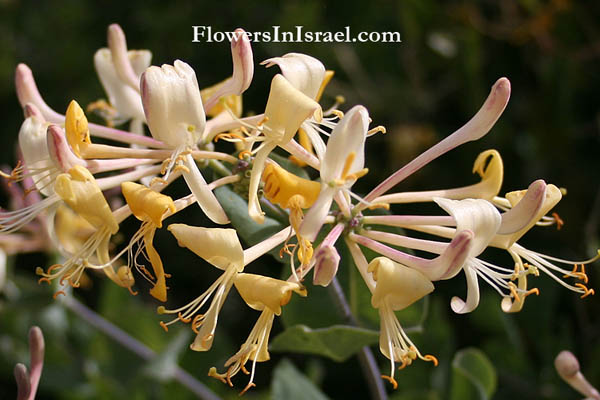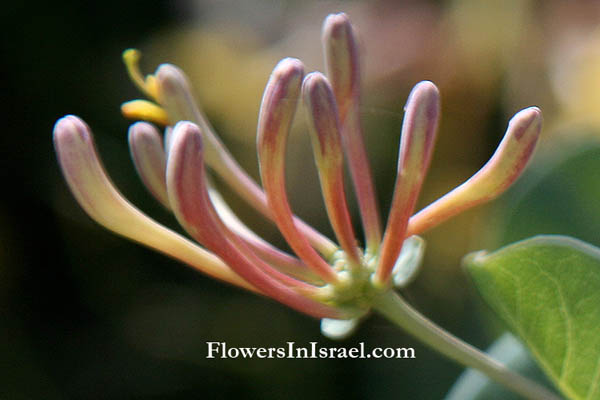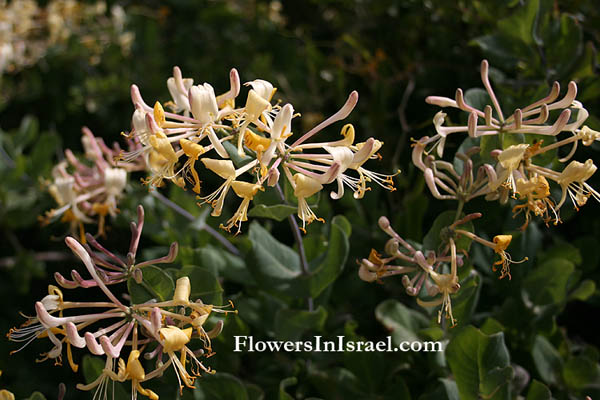Hebrew: יערה איטלקית, Arabic: عبهر
| Scientific name: | Lonicera etrusca G.Santi | |
| Common name: | Italian Honeysuckle, Etruscan Honeysuckle | |
| Hebrew name: | יערה איטלקית | |
| Arabic name: | عبهر | |
| Family: | Caprifoliaceae, יערתיים |

|
| Life form: | Phanerophyte shrub, climber | |
| Stems: | Twining vines, sometimes climbing to 600 cm, hollow twigs | |
| Leaves: | Opposite, entire | |
| Inflorescence: | Short dense terminal spike | |
| Flowers: | Yellow, violet, tubular corolla 3–5 cm, strongly 2-lipped | |
| Fruits / pods: | Berries, red rounded berry | |
| Flowering: | April, May | |
| Habitat: | Mediterranean maquis and forest | |
| Distribution: | Mediterranean Woodlands and Shrublands, Semi-steppe shrublands, Montane vegetation of Mt. Hermon | |
| Chorotype: | Mediterranean | |
| Summer shedding: | Perennating |

Derivation of the botanical name: Lonicera named for German herbalist Adam Lonitzer (1528-1586), by Linnaeus. etrusca, from Tuscany, the classical Etruria, in Italy. The Hebrew name: יערה, ya'ara, honeycomb (a hapax legomenon in the Bible, occurring Sam. I 14:27 ); related to Ethiopian wa'ar ( =honeycomb).

|